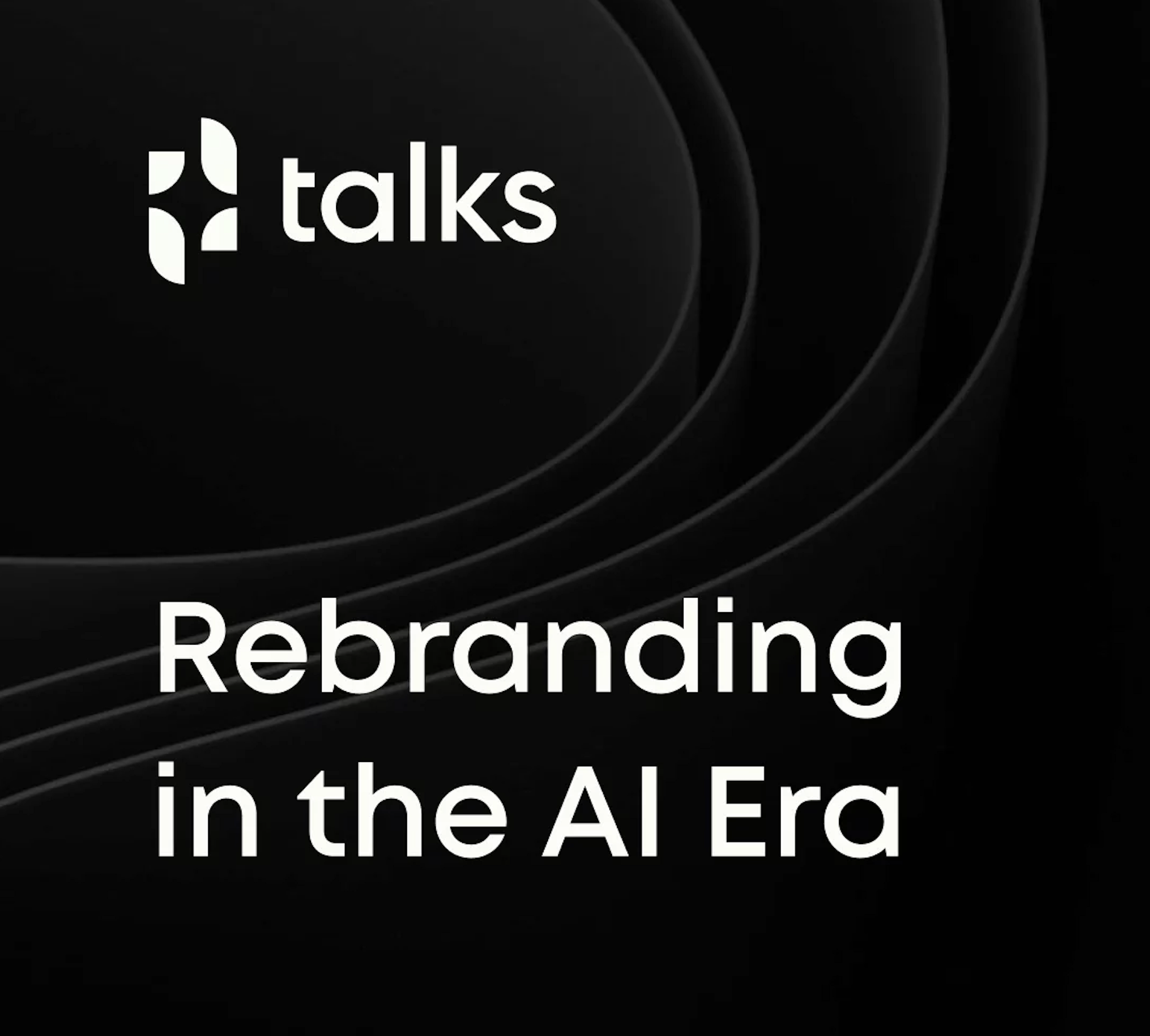How to build a strong brand
Explore the step-by-step process of building a B2B brand, from strategy to measurement and optimization.
A strong brand is one of the most valuable assets a business can have. It builds credibility, attracts customers, and drives long-term growth. In B2B industries, where competition is fierce and buying cycles are long, a clear and consistent brand can make the difference between winning and losing business.
But growing and maintaining a strong brand isn’t easy. Large organizations struggle with consistency across teams, markets, and channels. Employees create countless presentations, proposals, and emails daily—often without the right branding elements in place. Without clear processes and the right tools, brand identity can quickly become diluted.
So how do you build and manage a brand that stands out? It all starts with three core building blocks: people, processes, and technology. In this article, we’ll walk through the essential steps to create a brand that’s both visually impactful and built for business success.
Why branding is so important
Branding is a big concept. It encompasses the overall perception people have of your business. It’s how your company looks, sounds, and feels to customers. Good branding tells people what you stand for and why they should choose you over the competition. In a B2B context, branding is the promise a business makes to its customers, the values it stands for, and the experience it delivers.
Investing in building and maintaining a strong brand leads to:
- Greater customer trust: People buy from brands they recognize and feel good about. Consistency in messaging and visuals reassures customers they’re making the right choice.
- Stronger loyalty: Successful branding keeps customers coming back. When people connect emotionally with a brand, they’re more likely to stick with it—even when there are cheaper options.
- Market differentiation: A unique brand makes you stand out. With so many choices available, customers need a reason to remember and choose you.
Branding is an ongoing process, and sometimes a company’s brand needs a big change. Even well-established brands refresh their identity over time. Rebranding can breathe new life into a company, helping it stay relevant and appealing to new generations.
Examples of successful B2B brands
B2B branding requires a thoughtful approach. Unlike B2C, many B2B industries cater to highly technical or niche markets, where bold, flashy strategies often fall flat. Instead, these companies have mastered B2B branding by making their names synonymous with quality and innovation.
- Salesforce: The Salesforce brand is built on trust, innovation, and customer success. Their cloud-based CRM revolutionized sales and marketing, and their branding reinforces their leadership in the industry.
- Adobe: Known for creative software, Adobe has positioned itself as an essential tool for designers, marketers, and businesses worldwide. Their strong branding ensures they remain the go-to for digital creativity.
- HubSpot: By owning the concept of inbound marketing, HubSpot has become a dominant force in marketing automation. Their branding focuses on helping businesses grow better, making them a trusted industry leader.
branding
How to build a brand: 7 steps to success
- Step 1: Define your brand purpose
- Step 2: Research your target audience and competitors
- Step 3: Develop a brand strategy
- Step 4: Create a memorable brand identity
- Step 5: Build an online and offline presence
- Step 6: Establish brand consistency
- Step 7: Engage and build brand loyalty
Step 1: Define your brand purpose
Your brand needs a reason to exist beyond just making money. Sure, profits keep the lights on, but what’s the bigger picture? What change do you want to create in the world? That’s your brand purpose.
Start by defining your mission (what you do) and your values (what you stand for). A great example is Patagonia. They sell outdoor gear, but their real purpose is protecting the environment. Their mission, “We’re in business to save our home planet”, guides everything they do, from sustainable materials to activism.
Read more
Step 2: Research your target audience and competitors
You can’t build a brand that appeals to everyone. Narrow it down. Who is your ideal customer? Think about their age, interests, problems, and shopping habits. The more you understand them, the better you can speak their language.
Next, check out the competition. What are they doing well? Where do they fall short? Find the gaps in the market and position your brand to fill them.
Read more
Step 3: Develop a brand strategy
A brand strategy is your game plan. It includes:
- Your unique value proposition (UVP):What makes you different and better?
- Your brand positioning: How you fit in the market.
- Your messaging: What you want to say and how you say it.
Make sure your strategy aligns with your business goals. Are you trying to be a premium brand or an affordable go-to? Everything from your pricing to your marketing should support that choice.
Read more
Step 4: Create a memorable brand identity
Now, let’s make your brand recognizable. This includes:
- A brand name that’s catchy and meaningful.
- A logo that’s simple and versatile.
- A color palette and typography that reflect your brand personality.
- A brand voice—formal or casual, playful or serious?
Airbnb is a good example of this. Their logo, color scheme, and friendly, inclusive messaging make them instantly recognizable. Everything they do supports their brand identity: belong anywhere.
Read more
Time for a change? The do’s and don’ts of successful rebranding
Step 5: Build an online and offline presence
Your brand needs to exist where your customers are. Start with a professional website—it’s your digital storefront. Make it easy to navigate and match your brand identity.
Social media is another must. Be consistent with your visuals and messaging across platforms. Engage with your audience like a human, not a robot.
Offline branding matters too. If you have a physical space, make sure it reflects your brand. The same goes for packaging and events. Every touchpoint should reinforce who you are.
Read more
Step 6: Establish brand consistency
Consistency builds trust. When your brand looks and sounds different across platforms, it can confuse people and undermine trust. To avoid this, establish clear brand guidelines that ensure consistency across all your marketing channels, from your website and social media to ads, packaging, and emails.
Brand guidelines include:
- Logo usage (where and how to use it)
- Color codes and fonts
- Brand voice and tone
- Visual guidelines for images and videos
Read more
Step 7: Engage and build brand loyalty
The purpose of a brand is to build a loyal and engaged community. Engage with your customers through social media, email, and great customer service to keep that community strong.
Storytelling is one of the most powerful branding tools. People will spend more money if they feel emotionally connected to your brand and your products. Apple does this exceptionally well. They don’t just sell gadgets, they sell innovation, creativity, and belonging. That’s why their customers tend to stick around.
Read more
Additional content
Considering a rebrand for your organization?
Are you prepared to elevate your brand to new heights? Don’t miss a step in your new brand launch.


Measuring and optimizing for brand success
Building a brand is one thing—making sure it performs well is another. To measure brand success, you need to track key indicators like brand awareness, customer perception, and overall sentiment.
How to track brand performance
- Brand awareness: Use surveys, website traffic, and social media analytics to see how many people recognize and engage with your brand.
- Customer perception: Conduct customer feedback surveys and monitor online reviews to learn what works well and where you can improve.
- Brand loyalty: Track customer retention rates, referral rates, and repeat purchases to measure long-term trust and commitment.
Tools for monitoring brand sentiment online
- Google Alerts: Get real-time updates when your brand is mentioned online.
- Social listening tools: Monitor what people say about your brand on social media.
- Review platforms: Keep an eye on feedback from customers and employees.
Strategies for continuous brand improvement
- Act on feedback: Listen to customers and tweak your messaging, products, or services as needed.
- Stay consistent: Keep your branding aligned across all channels for a stronger identity.
- Evolve with trends: Keep an eye on market shifts and adapt without losing your core brand essence.
Read more
The 3 essential elements of maintaining a strong brand
1. People: The foundation of a strong brand
Your employees are your best brand ambassadors. Customers trust real people more than ads, so if your team believes in your brand, they’ll naturally promote it. Companies like Zappos understand this well. Their hiring process ensures every employee aligns with their customer-first culture. New hires even get offered money to quit—just to make sure they truly want to be there.
GE took a different approach by turning its employees into storytellers. Facing negative brand perceptions, GE encouraged workers to share their experiences on LinkedIn. The result? A massive boost in job applications and a stronger employer brand—all without spending a dime.
Read more
Internal branding strategies: How to unite your team and strengthen your brand
2. Processes: Keeping your brand consistent but flexible
A strong brand is the result of clear processes that ensure consistency while allowing for local adaptation. McDonald’s is a great example. Its golden arches are instantly recognizable worldwide, yet menus vary by region (think Samurai Pork Burgers in Thailand). This balance of global identity and local relevance keeps the brand strong across different markets.
For companies with multiple locations, brand consistency comes from setting clear guidelines but giving teams the freedom to adapt to local cultures and preferences. Headquarters should provide direction and resources—not micromanage—so each region can stay on-brand while meeting local needs.
Read more
3. Technology: The glue that holds it all together
Maintaining a consistent brand across hundreds of teams and locations can be challenging. Technology helps bridge this gap. Asset management platforms, automation tools, and AI are all used by companies to help keep branding consistent by providing employees with easy access to approved brand materials.
With the right technology, businesses can control who has access to what—whether it’s sales and customer service teams, marketing and branding departments, or legal and HR. This removes guesswork, keeps messaging on point, and makes sure every piece of content reflects the brand’s identity.
Read more
How technology enables brand success: 5 short cases
Technology plays a crucial role in ensuring brand consistency, efficiency, and alignment, especially for global B2B brands. Companies with large workforces and multiple offices need scalable solutions to maintain a unified brand identity across teams, documents, and communications.
Here’s how industry leaders have used Templafy to help strengthen their brands:
1. Aligning brand messaging: ERM, a global sustainability consultancy, struggled with outdated and off-brand documents. By implementing Templafy, they achieved a 75% reduction in document formatting time, ensuring every client-facing document stayed on-brand and compliant.
“The creative team has really seen a difference. Now, everyone has access to the same creative library, and we can be administrators of the content ourselves.”
– Sarah Middleton, Brand & Marketing Communications Director, ERM
2. Maintaining brand consistency: Tietoevry, a global tech company with 24,000 employees, needed a centralized way to manage brand assets across departments. With Templafy, they ensured employees always had access to the latest brand materials, strengthening consistency across all communications.
“We rarely see outdated templates being used anymore, and everyone knows where to find the most current assets. We’ve created over 100,000 documents that align with our brand guidelines.”
– Marte Alvfalk, Senior Brand Manager, Tietoevry
3. Seamlessly rolling out a brand refresh: Coloplast, a healthcare company operating in over 50 countries, used Templafy to automate and distribute updated brand assets. This allows employees to instantly access refreshed templates, making the transition smooth and efficient.
“Our local brand management teams can now edit corporate content directly and apply changes immediately, which IT admins find particularly valuable as it reduces their daily workload.”
– Wakana Pivoteau Sakihama, Head of Corporate Branding, Coloplast
4. Improving content efficiency: Ramboll, an engineering and design consultancy, integrated Templafy with Microsoft Office, enabling teams to create professional, on-brand documents quickly and effortlessly.
“Employees now know that they are always using the latest version of the templates and everything is completely integrated into the Office package. This has been a huge advantage.”
– Roos Nederveen, Senior Consultant Corporate Branding
5. Empowering employees around the world: PANDORA, a global jewelry brand, introduced dynamic templates that automatically apply pre-approved brand elements, creating a smart workflow that provides intuitive access to the correct brand assets
“Employees now know that they are always using the latest version of the templates, and everything is completely integrated into the Office package. This has been a huge advantage.”
– Kristian Lysgaard, Director of Corporate Communications, PANDORA
Templafy makes it easy for businesses to maintain control of their brand. Every document, presentation, and email automatically reflects the latest brand guidelines, so employees always have access to the right materials. With rules-based automation and enterprise-ready AI, Templafy scales to fit organizations of any size, keeping branding consistent no matter where teams are working. It’s a simple way to stay on brand while working more efficiently.
Building a brand that lasts
A great brand isn’t built overnight. And it doesn’t continue to thrive without constant maintenance. Markets shift, technology evolves, and customer expectations change. The brands that stand the test of time are the ones that stay ahead by investing in their identity, refining their message, and ensuring their teams have the right tools to stay consistent.
For B2B businesses, this means making branding an active part of daily operations—not just a one-time project. When branding is seamlessly integrated into workflows, supported by strong processes, and reinforced by the right technology, it becomes a competitive advantage.
Experience Templafy in action
See how Templafy can help your business strengthen its brand, improve efficiency, and ensure brand consistency across all content. Get a personalized demo today.
FAQ
What’s the most important element of building a strong brand?
A strong brand is built on consistency, clarity, and credibility. Every touchpoint, from marketing materials to customer interactions, should reinforce the same message, values, and visual identity. Without consistency, a brand becomes forgettable or confusing.
How does branding impact B2B companies differently than B2C companies?
In B2B, branding isn’t just about attracting customers—it’s about building long-term trust and credibility. B2B sales cycles are longer, decision-makers are more risk-averse, and purchases are often more complex. A strong, recognizable brand reassures buyers that they’re making the right choice.
How can businesses ensure brand consistency across teams and locations?
Brand guidelines and technology are key. Clear brand guidelines define logo usage, tone of voice, and visual identity. Technology, like brand asset management tools, ensures employees always have access to the latest, approved brand materials.
When is the right time to refresh a brand?
A brand refresh may be needed when your company undergoes major changes—such as expansion into new markets, a shift in customer expectations, or a dated visual identity. Regular brand audits can help identify whether a refresh is necessary.
What role does technology play in brand management?
Technology makes branding scalable. It ensures brand elements are accessible, automates compliance, and integrates brand assets directly into everyday workflows. Without the right tools, maintaining brand consistency across a growing company becomes nearly impossible.
How can companies measure the success of their branding efforts?
Key metrics include brand awareness, customer perception, and consistency in brand usage. Businesses can track website traffic, social media engagement, and customer feedback to gauge how well their brand is resonating with their audience.
What are the risks of poor brand management?
Inconsistent branding can weaken credibility, confuse customers, and lead to missed business opportunities. If employees don’t have the right brand materials, they may create their own, resulting in off-brand messaging and design that dilutes brand identity.
How can Templafy help with brand consistency?
Templafy integrates branding directly inside document workflows, ensuring employees always use up-to-date templates, logos, brand assets and messaging. By automating brand compliance, Templafy eliminates inconsistencies and allows teams to focus on creating high-quality, on-brand content effortlessly.




